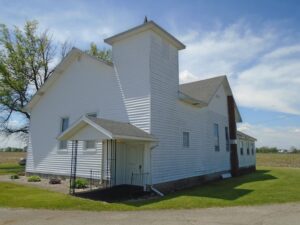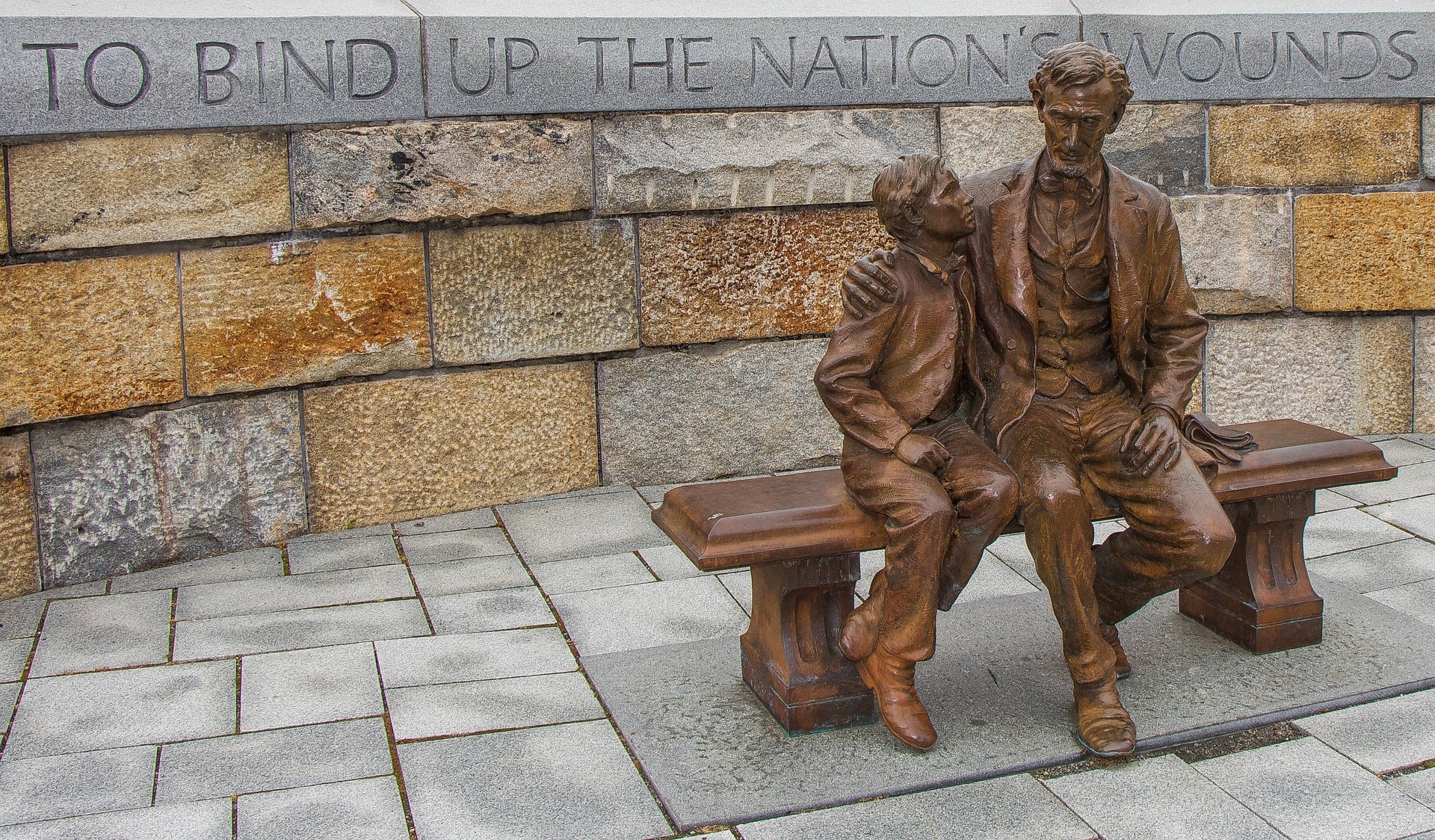According to a Washington Times article of May 24, 2020, called “Revisionists at it again: The ‘1619 Project” is bad history fueled by bad motives,” a woman named Nicole Hannah-Jones had written a historically inaccurate essay earlier that month that won a Pulitzer Prize. In it she claimed that the first slaves brought to America in 1619 marked the beginning of our nation, rather than the Declaration of Independence in 1776. She asserted that the colonists wanted to be independent because it would help slavery flourish. Historians can find nothing to substantiate that claim. In addition, a time.com article reminds us that 1619 was not the first time African slaves arrived in America. The truth is, African slaves were brought to Florida in 1565, and an attempt by the Spanish to bring African slaves in 1526 had failed when the slaves aboard the ship refused to comply. Unfortunately, this faulty concept that America began in 1619 may be taught as true history in schools across the country.
I ran across an article online by Forbes magazine called, “ ‘After All, Didn’t America Invent Slavery?’ ” The article helps explain why college students might easily believe that the arrival of Black slaves on America’s shores is the distinguishing factor that makes America unique. The author of the Forbes article, Tom Lindsay, referred to a professor who had published the results of having quizzed his students on their knowledge of American history and Western civilization at the beginning of the year for 11 years. The most surprising thing he learned from it was that the great majority of the students thought that slavery “ ‘was an American problem.’ ” Their knowledge of slavery before the Colonial period was very foggy. They seemed to know nothing about slavery, except as it related to America.
THE HISTORY OF SLAVERY
Slavery certainly didn’t begin in America. I thought it would be both interesting and important to look at the beginnings and history of slavery. I found a couple of helpful articles online. I’ll start with summarizing some information found in an article entitled “Slavery in History” at the historypress.co.uk website. Slavery has affected all races and every area of the world. There have been various types of slavery, which have included chattel slavery [complete ownership of one person by another], bonded slavery [serving to repay a debt], forced labor, and sexual slavery.
In some cases, ancient slavery developed out of need for many workers in civilized societies and farming economies. Another reason for ancient slavery was that, in war, not only were items of value taken as spoils, but also people who could be used as slaves.
DEPENDENT CIVILIZATIONS
- The earliest civilizations known to have slaves were the Mesopotamians and Sumerians. They resided in the area now known as Iran and Iraq, between 6,000 BCE and 2,000 BCE.
- The economy of the Egyptian civilization was dependent upon slavery. They did have some restrictions. For instance, they could not require children to do unreasonably hard work. The dramatic story of the Israelite nation gaining freedom from the Egyptians in the Biblical book of Exodus is well known.
- In Ancient Greece, most of the economy depended on slave labor. One out of three people were slaves. Wealthy society looked down on menial tasks. Their slaves were able to gain partial freedom by buying their freedom or being set free by their masters.
- When Greece declined and Rome took precedence, slavery thrived. At the peak of the Roman Empire, as much as 30% of the empire was comprised of slaves. Most of the slaves were acquired from conquered societies. Slaves began to be used for the barbaric entertainment of “gladiator” fights [fights to the death with another person or an animal]. Slave revolts became fairly frequent. Slaves during this time might be used as skilled craftsmen, hairstylists, painters, or tutors. Freed Roman slaves could be Roman citizens with legal rights. The medieaval period (‘the dark ages’) followed the fall of the Roman Empire.
At this point, I will look to another article, which is called “History of Slavery,” at historyworld.net. Although the “gang” slavery of the fallen Roman Empire dissipated, the slave trade thrived in the Mediterranean area. Wars led to the enslavement of captives. In the 10th Century, the Germans’ expansion toward the east resulted in the capture of many Slavic people. And during that time, slaves shipped to the Black Sea became an important contribution to the Russian economy.
Dynasties of Arabs along the coast south of the Mediterranean established an African slave trade. In about 700 AD, a Saharan Desert town called Zawila was created as a station for slave trade. In the 8th Century the Muslim world extended from Spain to Persia. Slaves captured in the area around Lake Chad [in the Nigeria area] were acquired by Arab families.
According to The History Press website, slavery was common in Britain when the Vikings invaded. Since they couldn’t read or write, all evidence is archaeological. Slaves were treated as animals and were killed for enjoyment or ritual. Many were beheaded. Rapes made females more valuable if they were pregnant with another potential slave. By condemnation of the Church, British Isles slavery died out in the 1200s.
Then along came Lordship and serfdom. Serfs were not considered property, and they had protection and rights. They were tied to the land and paid tribute for their shelter. The “Black Death” in the 14th Century mostly wiped out serfdom. The shortage of workers gave serfs negotiating opportunities.
The History World website tells us that a group of Muslim slaves entrusted with being leaders in the Egyptian army overthrew the sultan and took power in 1250 and kept control of a great deal of the Middle East for almost three centuries.
A NEW CHAPTER
When the Portuguese arrived in West Africa in the 15th Century, a new and tragic chapter in the history of slavery began. Their expeditions brought European ships to sub-Saharan Africa frequently. The uninhabited Cape Verde Islands had treacherous coastline but “lush tropical valleys.” Their location was convenient for sea routes from West Africa to Europe and America. In about 1460, some Portuguese settled in the islands. The Portuguese then set up stations for trading African captives. Some of the slaves worked on estates in the islands, and some were sent to Portugal and Spain. Slaves began working on cotton and indigo plantations, and some worked in weaving and dying in cloth factories.
 Once again I turn to The History Press website for a subject not covered on the other website—indentured servants. They were persons who would enter into a contract to serve for a certain number of years. Some used it to escape capital punishment or in exchange for passage to America. They could not marry without permission and lacked freedom of movement. Indentured servitude flourished from the 1600s to partway through the 1800s.
Once again I turn to The History Press website for a subject not covered on the other website—indentured servants. They were persons who would enter into a contract to serve for a certain number of years. Some used it to escape capital punishment or in exchange for passage to America. They could not marry without permission and lacked freedom of movement. Indentured servitude flourished from the 1600s to partway through the 1800s.
The Portuguese slave trade developed further. The cloth was traded for slaves in Guinea and the slaves taken to the Cape Verde Islands. Then the slaving ships that stopped at the Cape Verde Islands paid cash for the Guinea slaves. The slaves were then used to grow sugar, cotton, and tobacco in both the Caribbean and America. The Portuguese also sent slaves to their colony in Brazil.
THE SOURCE OF SLAVERY IN THE AMERICAN COLONIES
Other nations became involved in the transatlantic slave business. By the 1700s most of the ships involved in the African slave trading business were from Britain. They became involved in “triangular trade.” Ships left Liverpool and Bristol with firearms, alcohol (mostly rum), cotton products, metal trinkets, and beads—products desired in West Africa. Slaves captured in the interior of Africa were exchanged for the goods from Britain and shipped by the British to America, including the West Indies. The slaves were stuffed below the ship decks, chained, fed poorly, and badly frightened. It is estimated that one in six died before reaching the other side of the ocean. Slaves in the West Indies worked on sugar cane plantations so that molasses could be extracted from it. Then the molasses was shipped to England for making rum.
African slave trading business were from Britain. They became involved in “triangular trade.” Ships left Liverpool and Bristol with firearms, alcohol (mostly rum), cotton products, metal trinkets, and beads—products desired in West Africa. Slaves captured in the interior of Africa were exchanged for the goods from Britain and shipped by the British to America, including the West Indies. The slaves were stuffed below the ship decks, chained, fed poorly, and badly frightened. It is estimated that one in six died before reaching the other side of the ocean. Slaves in the West Indies worked on sugar cane plantations so that molasses could be extracted from it. Then the molasses was shipped to England for making rum.
ANTI-SLAVERY SENTIMENTS
In the late 1600s the Quakers in England began protesting the inhuman slave trade. In 1776, the American Quakers recognized that the freedom stated in the Declaration of Independence did not include the African slaves. In that same year, the Quakers in Pennsylvania freed their slaves. Massachusetts became the first state to abolish slavery in 1780. During the next few years, other northern states followed their example. The southern states maintained that slaves were necessary for their agricultural economy. Abolitionists gave their focus to abolishing the transatlantic slave trade, thinking this would eventually end slavery. In 1787, the constitutional congress in America gave in to pressure from the southern states and agreed that no anti-slavery laws would be passed for 20 years. In 1807, both Britain and America outlawed the transatlantic slave trade. Unfortunately, enough children were being born to American slaves to perpetuate the slave labor on the southern cotton plantations.
recognized that the freedom stated in the Declaration of Independence did not include the African slaves. In that same year, the Quakers in Pennsylvania freed their slaves. Massachusetts became the first state to abolish slavery in 1780. During the next few years, other northern states followed their example. The southern states maintained that slaves were necessary for their agricultural economy. Abolitionists gave their focus to abolishing the transatlantic slave trade, thinking this would eventually end slavery. In 1787, the constitutional congress in America gave in to pressure from the southern states and agreed that no anti-slavery laws would be passed for 20 years. In 1807, both Britain and America outlawed the transatlantic slave trade. Unfortunately, enough children were being born to American slaves to perpetuate the slave labor on the southern cotton plantations.
THE BATTLE OVER SLAVERY IN THE STATES
Slavery continued to be a major issue of contention between the North and the South. In 1820 political battles resulted in The Missouri Compromise. In this bill, Maine would become separate from Massachusetts and would be a slave-free state, to keep a balance in the number of “slave states” and “free states.” It was also agreed that no more slave states would be admitted to the Union north of the line extended from Missouri’s southern border. The balance in the number of slave and free states admitted to the Union lasted for 30 years, until California applied for admission. Among compromises made at that time was a promise that New Mexico and Utah could enter the union as either free or slave states. The Fugitive Slave Laws that were passed in 1793 were a continuous point of contention. They allowed slave holders from the South to reclaim slaves that had escaped to states in the North. The Compromise of 1850 meant to settle problems caused by the 1793 Fugitive Slave Laws only caused more problems.
According to history.com, in 1831 it was first recorded that a slave gave credit to an “underground railroad” for helping him escape to freedom. An underground network had been developed to guide slaves to safe hiding places, which included homes, churches, and schoolhouses. The Quakers and The African Methodist Episcopal Church were active in helping the slaves escape.
Here, I began reading about the beginning of the Civil War in the historyworld.net article. The article stated that President Lincoln never intended to end slavery. He only wanted to save the Union. “Whoa! Hold it!” I thought. “This is not what I learned in school.” This sounded like another attempt to revise American history. Everything in The History World article up to that point had shown tensions building over the issue of slavery, and Lincoln had been an anti-slavery candidate. I decided to consult wallbuilders.com, and there I found an article entitled “Confronting Civil War Revisionism: Why the South Went to War.” There was plenty of evidence presented to show that the Civil War was all about slavery. I realize that if Lincoln and all those who opposed slavery hadn’t stood their ground in opposing it, there would have been no reason for the South to try to secede from the Union and attack the North.
The Five Things You May Not Know
 I discovered an article called “5 Things You May Not Know About Abraham Lincoln, Slavery, and Emancipation” on the history.com website. It gave some insight into Lincoln’s thoughts on slavery. Based upon some speeches and other documents, they showed that Lincoln was not an abolitionist in the strictest sense of the word. He believed that slavery was morally wrong, but he was not certain how it should be abolished under the political situation of the time. As some other leaders, such as Thomas Jefferson, he could not envision Blacks and whites living together peaceably. For a time he believed, as some other leaders did, that the best option was to offer a colony in Africa, rather than integrating them as voters and leaders in American society. The article states, “Lincoln’s position on social and political equality for African Americans would evolve over the course of his presidency.” It says that in his last speech before he died, he supported allowing Black men who served in the Union army to vote.
I discovered an article called “5 Things You May Not Know About Abraham Lincoln, Slavery, and Emancipation” on the history.com website. It gave some insight into Lincoln’s thoughts on slavery. Based upon some speeches and other documents, they showed that Lincoln was not an abolitionist in the strictest sense of the word. He believed that slavery was morally wrong, but he was not certain how it should be abolished under the political situation of the time. As some other leaders, such as Thomas Jefferson, he could not envision Blacks and whites living together peaceably. For a time he believed, as some other leaders did, that the best option was to offer a colony in Africa, rather than integrating them as voters and leaders in American society. The article states, “Lincoln’s position on social and political equality for African Americans would evolve over the course of his presidency.” It says that in his last speech before he died, he supported allowing Black men who served in the Union army to vote.
In the back of my mind, there was a speech where Lincoln showed how grievous a sin he believed slavery was. I found the speech. It was his second Inaugural Address. In it he says: “Fondly do we hope—fervently do we pray—that this mighty scourge of war may speedily pass away. Yet, if God wills that it continue, until all the wealth piled by the bonds-man’s two hundred and fifty years of unrequited toil shall be sunk, and until every drop of blood drawn with the lash, shall be paid by another drawn with the sword, as was said three thousand years ago, so still it must be said, ‘the judgments of the Lord are true and righteous altogether.’ ”
According to Britannica.com, it was in 1860 that Republican anti-slavery candidate Abraham Lincoln was elected president. Subsequently, seven southern states followed through on their threat to secede from the Union. They formed the Confederate States of America. Early on the morning of April 12, 1861, rebels attacked Ft. Sumter in South Carolina, to gain control of it from the Union. Weeks later, more states joined the Confederates. In 1862, the war finally began to turn in favor of the North, so Lincoln decided to write the Emancipation Proclamation—a document to free the slaves. He held onto it for a while, until the Union’s control of the battle seemed more secure. The final draft took effect on January 1, 1863. Blacks from the south were then able to join the Union army. At first Black troops were paid less, but Congress decided to give equal pay and make it retroactive. Twenty-five Black soldiers received the Medal of Honor for their bravery.
In 1863 there was talk in the Midwest states of joining the Confederacy or starting a third nation. By 1863 the Confederate troops and civilians were suffering from food shortages. The war ended, in effect, on April 9, 1865, when Confederate leader General Lee surrendered to Union leader General Grant. The final surrender of the Confederates to the Union took place on June 2, 1865. It is estimated that about 1,556,000 men served in the Union army and about 800,000 in the Confederate army. It was traditionally estimated by historians that about 360,000 Union soldiers and 260,000 Confederate soldiers died (about 620,000 total), but later calculations suggest between 752,000 and 852,000 total. America had paid a very, very great price for slavery.
According to the history.com website, on the evening of April 14, 1865, just 5 days after Lee’s surrender to Grant, President Lincoln was assassinated. An actor and Confederate sympathizer named John Wilkes Booth and six co-conspirators had planned to kidnap Lincoln on March 20th, but Lincoln didn’t show up at the location where they planned to kidnap him. Since that plan failed, they decided to kill Lincoln, the Vice President, and the Secretary of State, in order to cause chaos in the U.S. government. Lincoln was shot while watching a performance at Ford Theatre with his wife. The shooter, Booth, escaped on horseback with a broken leg, causing a great manhunt. Lincoln died the following morning. Plans to kill the Vice President and Secretary of State failed. Lincoln’s wife, Mary, was so traumatized that she took to bed for several weeks and did not attend the funeral. Apparently she never fully recovered. She was institutionalized in 1875.
There was a not-so-well-known limitation to the Emancipation Proclamation. On a very interesting website called Intellectual Takeout, I found information about five Native American tribes that had forsaken their previous custom of taking Native American slaves, who might achieve freedom through intermarriage. They replaced that custom with the European idea of using Africans as their slaves. The tribes involved were the Cherokee, Chickasaw, Choctaw, Creek, and Seminole. The American government found it necessary to free the slaves owned by these five tribes by means of a treaty in 1866.
SLAVERY TODAY
Although the Civil War ended the use of Blacks as slaves on the plantations of America, it did not end slavery entirely. Unfortunately, some forms of slavery still exist today in the U.S. and around the world. A website called endslaverynow.org explains several different kinds of contemporary slavery.
“Domestic servitude” takes place when hired domestic help is not allowed to leave. Migrant workers are often tricked into these situations. Forced marriages are a form of domestic servitude also, as well as a form of sexual slavery.
It is estimated that there are 4.5 million victims of “sex trafficking” worldwide. Some people are trapped as sex slaves by means of employment offers or dating services. In the U.S., sex trafficking victims are often taken to brothels, escort services, massage parlors, strip clubs, or hotels, or they may be put on the street as prostitutes or made to be utilized in pornography.
Estimates say that 20.9 million people are involved in a type of slavery comparable to the slaves in America before the Civil War—“forced labor.” Countries, businesses, or individuals force people to work for their own benefit. Forced labor is used in many industries, such as fishing, textiles, construction, minerals, and agriculture.
According to the website, “bonded labor” is the most common type of slavery in today’s world. It might also be called debt bondage or peonage. This is when people agree to slavery to secure a loan or because they owe a debt inherited from a relative. While the person works to repay the debt, the employer keeps adding expenses, such as food, shelter, or water. Repayment becomes impossible. The debt is often passed to the next generation. Migrants are particularly susceptible.
I cannot endorse the End Slavery Now organization or its participants, since I know little about them. But their website does seem to have helpful information. At the bottom of the web page, you can click on various things, such as “Modern Slave Narratives,” “Activists’ Stories,” and “Buy Slave Free” (for suggestions on buying products not produced by slave labor).
AMERICA’S PROGRESS
Some believe that the Declaration of Independence, stating that “all men are created equal,” was hypocritical in regard to Blacks. Dr. Martin Luther King, Jr., once wrote: “We will reach the goal of freedom in Birmingham and all over the nation, because the goal of America is freedom.” It seems he understood that freedom for all was a goal that had to be attained through effort. He believed in nonviolent protests. Although there is said to be evidence of sexual misconduct by Dr. King and it is thought that some associated with him were Communists, he was the key figure in helping to get some very important things accomplished for Black Americans. The civil rights movement of the 1950s and 60s broke down the segregation customs and established voting rights for Blacks. On April 4, 1968, at the age of only 39, Dr. King was assassinated. Again I am relying on the history.com website for information. On that day King and some of his associates were staying at the Lorraine Motel in Memphis, Tennessee. While he stood on the balcony of the second floor at 6:05 p.m., the bullet of a sniper successfully targeted him, striking his neck. He was pronounced dead at a hospital approximately an hour later. A week later President Johnson signed the Fair Housing Act. About two months later, a criminal named James Earl Ray was arrested for the killing. King’s family believed Ray’s later assertion that there was a conspiracy. We still have a ways to go in ensuring equal treatment for Blacks. We need our police, but we also need to find ways to weed out the ones who are prejudiced. New laws and guidelines are being enacted to try to accomplish that.
EQUALITY IN THE CHURCH
The Bible teaches Christians to consider other races as equals. Galatians 3:28 [WEB] says: “There is neither Jew nor Greek, there is neither slave nor free, there is no male and female, for you are all one in Christ Jesus.” It’s beautiful to see unity of the races in the Church. Below is a video by the Brooklyn Tabernacle Choir, where you will see Christians of various races joining their voices to sing a great song of encouragement.
Videos suggested at the end of this video are not necessarily endorsed by this website.






Leave A Comment